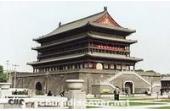Xi'an
- Things to do
-
- Photo(169)
- Tips&article(116)
- Make it Happen
- Map
-
loading...
- Other Tours
-
- Jinshan Hot Spring
- Three Caves of the Jade Stream
- Zhouxi Miao Village
- Gold Bull Hill, the site of ancient
- Xi'an
- Lianzhou Underground River
- Yangshuo Big Banyan Tree
- Genzi Litchi Cultural Tourist Area
- Didu Hot Spring
- Culture Street
- Gaozhou Xiantai Temple
- Xuanwu Mountain in Jieshi County
- Sanyuan Tower
- Chinese Folk Culture Park
Top 5 Lists
Xi'an is the first of China's Four Great Ancient Capitals. The immaculately restored and mighty city wall still dominates the center of the city, with road traffic navigating through tunnel-like openings in its girth. Many modern buildings keep with ancient decor, especially the rooves. Xi'an is characterized by and proud of its ancient heritage, and rightly so.
"China" began in Xi'an, when First Emperor Qin (from whom China gets its name) finished conquering and united the warring states in 221 BC. The entombed Terracotta Army stands as a monument to the power of Emperor Qin.
Xi'an served as China’s capital for the most dynasties: ten dynasties spread intermittently over a 1,100 year period, most notably the Han Dynasty (206 BC–220 AD) and the Tang Dynasty (618–907), golden ages in China's history. Tang opera is still popular in Xi'an night shows.
Xi’an has world class ancient, religious, cultural and natural attractions, including: the Terracotta Warriors and Horses, The Ancient City Wall, Big Wild Goose Pagoda, Small Wild Goose Pagoda, Huaqing Hot Springs, Mount Hua, Banpo Museum, The Forest of Steles , The Great Mosque, Qianling Mausoleum and Famen Temple.
Geography
Shaanxi, a landlocked province in Central China, is one of the birthplaces of civilization in China. Shaanxi is also called Qin (presumably after Emperor Qin, who united China in 221 BC and made his capital in Xi’an) or Shaan. Shaanxi Province has an area of 205,800 square kilometers and a population of 37 million people.
Xi’an is situated in the center of the Weihe Plain, bounded by the Weihe River in the north and the Qin Mountain Range in the south. Beishan (the Northern Mountains) and Qinling (the Qin Mountain Range) stand as two boundaries that divide the province into three natural areas: the Loess Plateau in Northern Shaanxi, the Guangzhong (Vast Central) Plain, and the Qinba Hills. The plateau and hills make up most of the province's area. Shaanxi has a continental climate with four distinct seasons. The months from March to November are the tourist high season as they are warmer.
History
Xi'an played a very important part in Chinese history. It served as the imperial capital for 10 ancient imperial dynasties from 221 BC to 906 AD. Read more about the History of Xi'an.
The Meaning of Place Names Around Xi'an
Xi’an is pronounced sshe-an (ignoring tones). The unusual apostrophe in the middle of this city’s name divides two Chinese words xi (west) and an (peace). Without the apostrophe it would be indistinguishable from the Chinese word xian, pronounced sshyen, which could have any number of meanings, including salty.
Salty is the meaning of xian in Xianyang, Xi'an's northwest suburb, which now holds Xi'an's international airport. When Emperor Qin Shihuang united China for the first time in 221 BC, he chose Xianyang as the capital of his empire. The yang in Xianyang in the Chinese word meaning sun, bright, positive or male. This yang is widely known as one of the two components of yin and yang, the opposite and coexisting forces in Taoist philosophy.
Xi’an was called Chang’an until the Ming Dynasty began in 1368. The apostrophe in Chang’an separates two Chinese words: chang (long or perpetual) and an (peace). Without the apostrophe (Changan) it could be misconstrued as the two Chinese words chan and gan.
Xi’an is the capital of Shaanxi province. If the tones of the Chinese language are ignored Shaanxi is pronounced shan-sshe, exactly the same as Shanxi province on its eastern border. Shaanxi is written with an extra a (although this does not conform to the rules for standard Chinese romanization, called pinyin) to distinguish it from neighboring Shanxi province where tonal markers are not used.
Shaanxi is made up of two Chinese words: Shan (a falling-rising tone word that has no meaning apart from as a province name) and xi (west). The Shan in neighboring Shanxi is a high tone character and means mountain, and xi once again represents the character for west. The Shaan in Shaanxi has a repeated a probably because the falling-rising tone, sounds a little like a repetition of the vowel. The Chinese tones make the language difficult to learn and, on occasions such as explained above, easy to misconstrue.
Tips & articles
|
|
|
forum discussion
|
|
|












